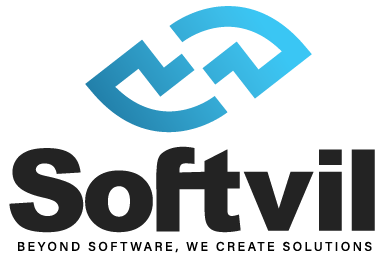Software testing plays a pivotal role in meeting this demand, ensuring products and services remain resilient and customer centric. In this context, agile methodologies have emerged as a transformative force, fostering flexibility and innovation. Among these agile approaches, Scrum testing stands out as a framework that not only champions high-speed implementation but also emphasizes collaborative problem-solving. This introduction delves into the urgency for swift solutions, setting the stage for exploring the agile paradigm, with a particular focus on Scrum testing. As organizations increasingly pivot towards agile methodologies, understanding the nuances of Scrum becomes imperative for professionals navigating the ever-evolving landscape of software testing.
- Understanding Scrum in Software Testing: Embracing Flexibility and Innovation
- Navigating the Agile Landscape: Unraveling the Distinction Between Agile and Scrum in Software Testing
- Navigating the Shift: Evolution from Traditional to Agile Testing in Software Testing
- Empowering Testers in Scrum: Adapting to Dynamic Changes in Software Testing
- Preparing Testers for the Agile Paradigm: A Dual Focus on Tools and Mindset in Software Testing
- Implementing Agile Testing: A Strategic Approach for Software Testing Excellence
- Conclusion
Understanding Scrum in Software Testing: Embracing Flexibility and Innovation

In the realm of software testing, Scrum has emerged as a beacon of agility, offering a nimble and adaptable framework that addresses the pressing need for high-speed implementation in contemporary business environments.
Definition of Scrum
At its core, Scrum is not merely a method, but a lightweight and flexible framework designed to optimize collaboration and problem-solving within a team. This adaptability is particularly crucial in the ever-evolving landscape of software testing, where rapid adjustments and innovative solutions are imperative.
Scrum Team Components
Scrum’s efficacy lies in its unique team composition, bringing together the Product Owner, Scrum Master, and a cross-functional group of developers and testers. This combination underscores the framework’s emphasis on flexibility, creativity, and productivity. Cross-functional teams negate dependencies on external entities, fostering self-organization and efficient task completion. The Scrum team’s collective focus on delivering high-quality products, even in the face of complexity, underscores the framework’s commitment to excellence.
In essence, understanding Scrum is delving into a framework that not only accommodates the fluid nature of software testing but also champions a collaborative and adaptable approach, ensuring that testing processes align seamlessly with the demands of today’s high-paced software development cycles.
Navigating the Agile Landscape: Unraveling the Distinction Between Agile and Scrum in Software Testing

Differentiating Agile as a Set of Methodologies
Agile, a comprehensive set of methodologies, is characterized by its incremental and iterative approach to software development. It fosters collaboration between cross-functional teams, prioritizing adaptability and customer feedback throughout the development process.
Scrum as a Framework within Agile
Within the broader umbrella of Agile methodologies, Scrum stands out as a specialized framework designed to address complex issues while ensuring product quality. Unlike Agile, which encapsulates various approaches like Rational Unified Process (RUP) and Extreme Programming (XP), Scrum provides a structured yet flexible approach to achieving Agile’s overarching goals. Scrum’s focus on iterative cycles, efficient team collaboration, and adaptability positions it as a subset that seamlessly integrates into the Agile framework.
Understanding how Scrum fits into the broader Agile landscape is crucial for professionals in software testing, as it empowers them to leverage a framework that balances structure with flexibility, optimizing the testing process within the dynamic world of software development.
Navigating the Shift: Evolution from Traditional to Agile Testing in Software Testing

Traditional Testing’s Sequential Processes
In the traditional landscape of software testing, sequential processes have long been the norm. This approach entails understanding user needs, product development, and subsequent testing before deployment. The methodology assumes predictability and control throughout the Software Development Life Cycle (SDLC). Hierarchical structures standardize procedures, with tasks assigned based on individual skills. While clear, this methodology lacks the flexibility required in today’s rapidly changing software landscape, often resulting in time-consuming procedures due to fixed sequences.
Introduction to Agile Testing’s Iterative and Dynamic Processes
The transition to agile testing signifies a paradigm shift towards more interactive and dynamic processes. Unlike traditional testing, agile testing integrates testing throughout the development process in iterative cycles known as sprints. Each sprint has a fixed duration, emphasizing unpredictability in processes. Agile testing thrives on adaptability, swiftly adjusting to changes based on continuous customer communication and feedback. This approach significantly reduces delivery times and accommodates modifications as requested by users. The iterative nature of agile testing ensures that testing is not a standalone phase but a continuous and integral part of the software development life cycle. Understanding this transition is pivotal for software testing professionals, as it signifies a departure from rigid methodologies to a more agile and responsive approach, better suited to the demands of modern software development.
Empowering Testers in Scrum: Adapting to Dynamic Changes in Software Testing

Active Participation in Scrum Events
In the Scrum framework, testers experience a notable shift in their roles, actively participating in key events such as sprint-planning sessions, daily standup meetings, and sprint retrospectives. This departure from the traditional testing approach ensures that testing is no longer relegated to the final stages but becomes an integral and continuous part of the development process.
Integration of Testing Throughout Development
Unlike conventional methodologies, Scrum mandates the integration of testing throughout the entire development lifecycle. Testers work collaboratively with developers, engaging in testing activities from the project’s inception. This approach ensures a continuous feedback loop, facilitating quick identification and resolution of issues, thereby enhancing overall product quality.
Exposure to New Aspects
Scrum introduces testers to a broader spectrum of responsibilities, extending beyond conventional testing domains. Testers gain exposure to intricate aspects such as business logic, architectural diagrams, and development terminologies. Additionally, the shift towards automation tools, including Selenium, Appium, and Jenkins, necessitates familiarity and competence in these technologies, contributing to a more dynamic and multifaceted skill set among testers. In essence, embracing Scrum instigates a transformative journey for testers, fostering active involvement, continuous testing integration, and exposure to diverse elements critical in today’s ever-evolving landscape of software testing.
Preparing Testers for the Agile Paradigm: A Dual Focus on Tools and Mindset in Software Testing

Essential Knowledge in Automation and Project Management Tools
As the software testing landscape evolves, a pivotal aspect of preparing testers for agile environments involves acquiring essential knowledge in automation tools and project management tools. Testers are now expected to be proficient in tools such as Selenium, Appium, JIRA, and others, which expedite testing processes and enhance collaboration. Mastery of these tools not only ensures efficiency in testing but also contributes to a seamless integration of testing into the agile development cycle.
Importance of Adapting to the Agile Mindset
Beyond tool proficiency, successful transition to agile testing necessitates a profound shift in mindset. Testers must embrace the agile principles of adaptability, collaboration, and continuous improvement. Agile methodologies prioritize flexibility, customer feedback, and iterative development. Testers adapting to this mindset become active contributors to the entire development process, engaging in ongoing collaboration with developers, stakeholders, and other team members.
Implementing Agile Testing: A Strategic Approach for Software Testing Excellence

Overview of Testing in Scrum – The Four Quadrants
Agile testing in Scrum is structured around the Four Quadrants model, offering a comprehensive approach to testing. Quadrant 1 focuses on immediate feedback and code quality, involving unit testing and component architecture testing. Quadrant 2 emphasizes business objectives, user scenarios, and user experience through activities like prototype and wireframe testing. Quadrant 3 incorporates automation testing, collaborative testing, user acceptance testing, exploratory testing, usability testing, and pairwise testing. Quadrant 4 addresses performance, data migration, infrastructure, stress, load, security, and scalability testing. Understanding and navigating these quadrants provide a holistic view of testing activities in an agile context.
Agile Testing Strategy: Iteration 0, Development Phase, Product Deployment, and Production Support
An effective agile testing strategy encompasses distinct stages. Iteration 0 involves initial setup work, including creating a business case, analyzing requirements, and estimating costs. The Development Phase consists of sprints with agile practices, including unit testing, service integration testing, and agile acceptance testing. Product Deployment involves user training, data backups, release marketing, and documentation. The Production Support phase includes regular testing, bug reporting, and fixes by the production support team.
Conclusion
In conclusion, embracing the transition to agile testing signifies a profound commitment to continuous learning and growth. Recognizing this shift as an opportunity, rather than a challenge, allows testers to enhance their skills and cultivate a dynamic mindset in the ever-evolving landscape of software development. Agile testing not only meets the demands of high-speed implementation but serves as a catalyst for professional development. With each adaptive sprint and collaborative iteration, testers propel their careers forward, making the agile environment not just a methodology but a transformative journey towards excellence in software testing.

